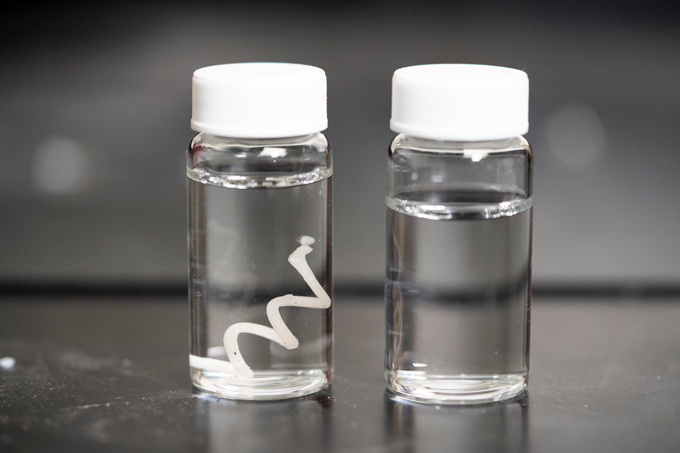A pinch of polymer-munching enzymes could make biodegradable plastic packaging and forks truly compostable.
With moderate heat, enzyme-laced films of the plastic disintegrated in standard compost or plain tap water within days to weeks, Ting Xu and her colleagues report April 21 in Nature.
“Biodegradability does not equal compostability,” says Xu, a polymer scientist at the University of California, Berkeley and Lawrence Berkeley National Laboratory. She often finds bits of biodegradable plastic in the compost she picks up for her parents’ garden. Most biodegradable plastics go to landfills, where the conditions aren’t right for them to break down, so they degrade no faster than normal plastics.
Embedding polymer-chomping enzymes in biodegradable plastic should accelerate decomposition. But that process often inadvertently forms potentially harmful microplastics, which are showing up in ecosystems across the globe (SN: 11/20/20). The enzymes clump together and randomly snip plastics’ molecular chains, leading to an incomplete breakdown. “It’s worse than if you don’t degrade them in the first place,” Xu says.
Her team added individual enzymes into two biodegradable plastics, including polylactic acid, commonly used in food packaging. They inserted the enzymes along with another ingredient, a degradable additive Xu previously developed, which ensured the enzymes didn’t clump together and didn’t fall apart. The solitary enzymes grabbed the ends of the plastics’ molecular chains and ate as though they were slurping spaghetti, severing every chain link and preventing microplastic formation.
 Filaments of a new plastic material degrade completely (right) when submerged in tap water for several days.Adam Lau/Berkeley Engineering
Filaments of a new plastic material degrade completely (right) when submerged in tap water for several days.Adam Lau/Berkeley Engineering
Adding enzymes usually makes plastic expensive and compromises its properties. However, Xu’s enzymes make up as little as 0.02 percent of the plastic’s weight, and her plastics are as strong and flexible as one typically used in grocery bags.
The technology doesn’t work on all plastics because their molecular structures vary, a limitation Xu’s team is working to overcome. She’s filed a patent application for the technology, and a coauthor founded a startup to commercialize it. “We want this to be in every grocery store,” she says.

